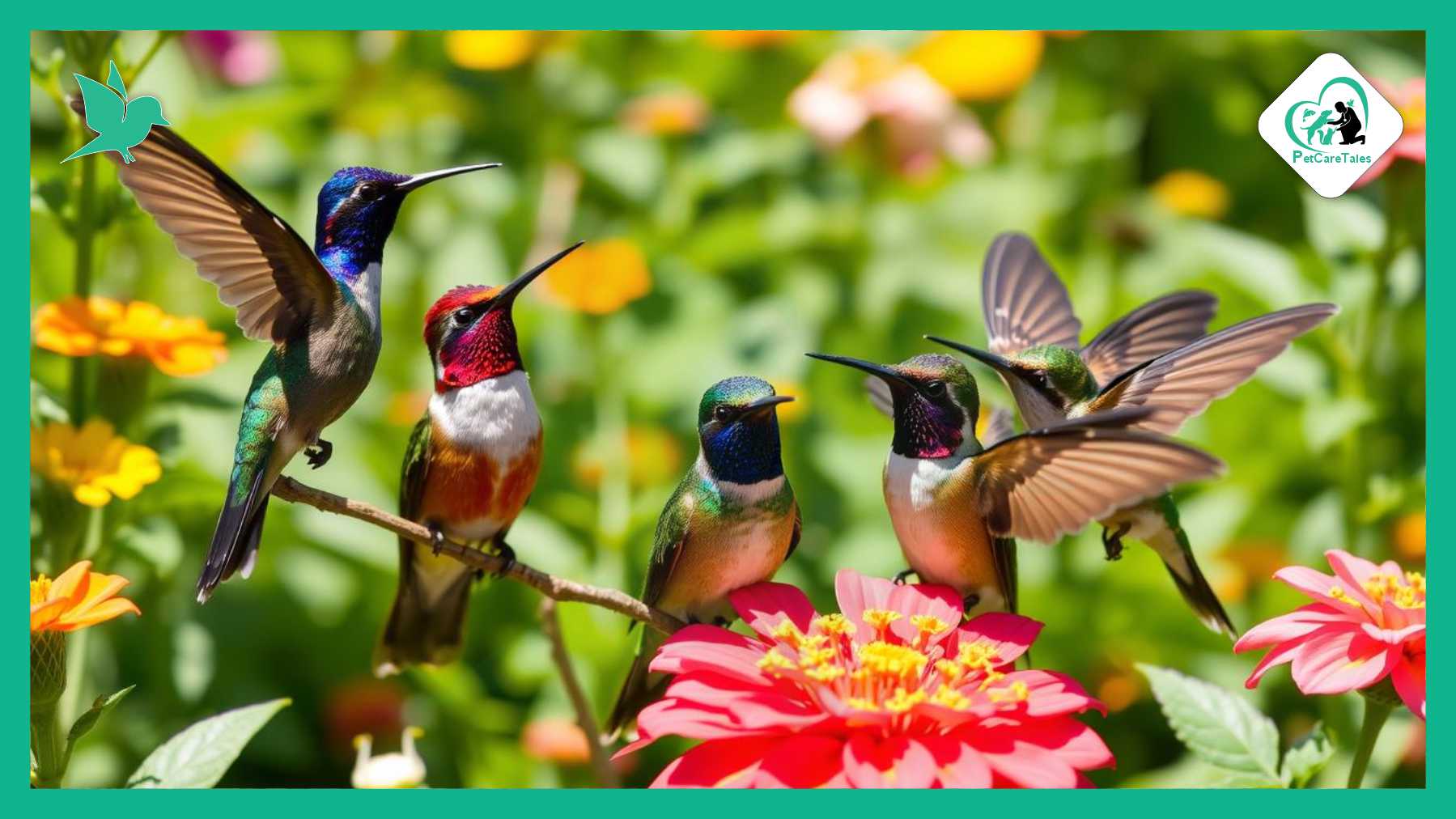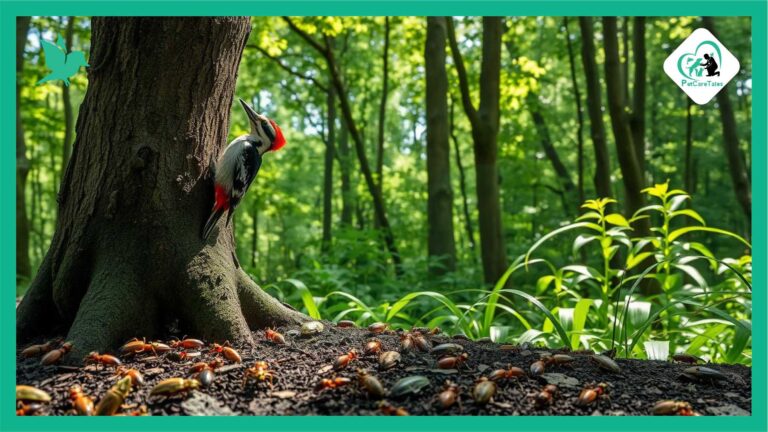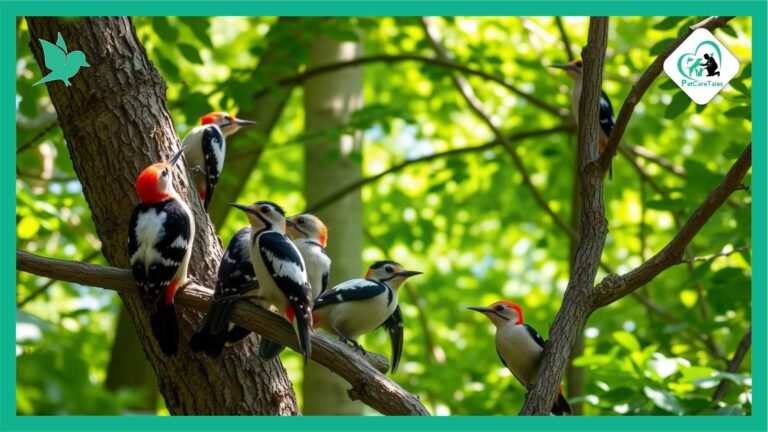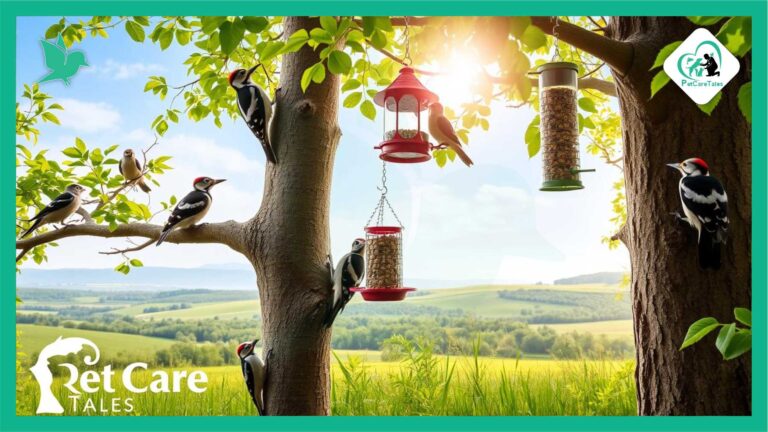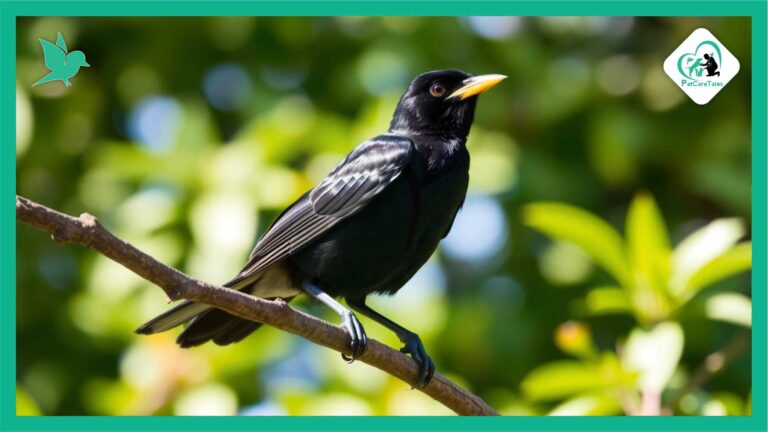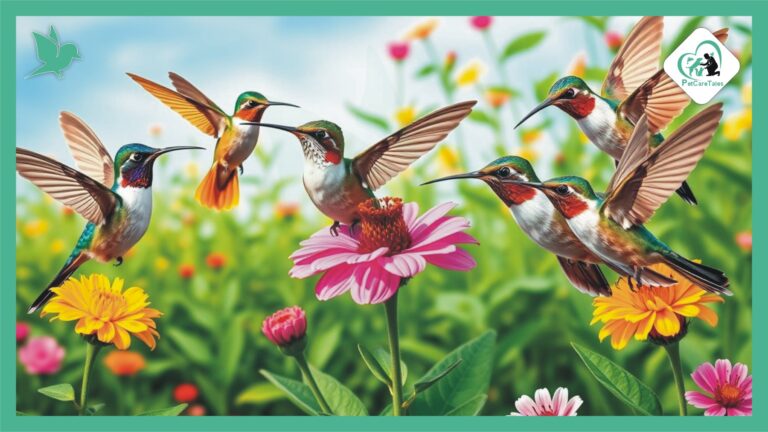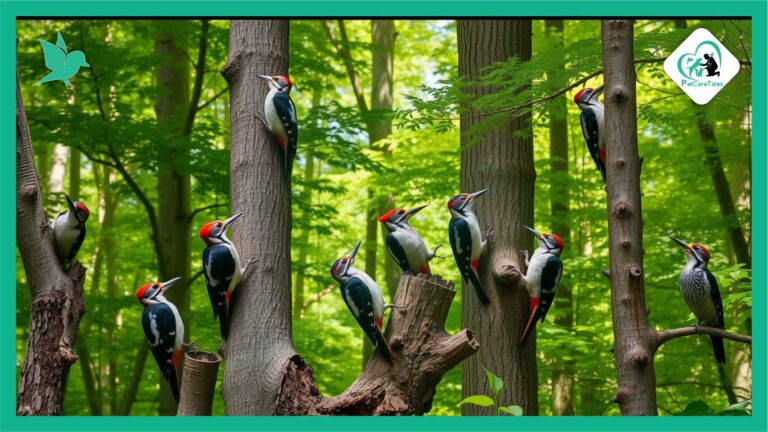5 Types of Hummingbirds in Maryland (With Photos)
Did you know the Ruby-Throated Hummingbirds in Maryland is the only species that breeds in the eastern United States? This bird is not just common in Maryland. It’s also a key pollinator, helping plants grow. These plants feed many animals, including us.
In this article, you’ll learn about five unique hummingbirds in Maryland. We’ll talk about how to spot them, their behavior, and rare visitors like the Black-Chinned and Calliope Hummingbirds. You’ll also find out how to attract these birds to your garden. This will help you understand their role in our ecosystem.
With the right gardening and patience, you can make your yard a hummingbird haven. This way, you can enjoy their beauty and wonder.
Key Takeaways
- The Ruby-Throated Hummingbird is the primary species found in Maryland.
- Rufous Hummingbirds are incredibly rare in the region, particularly sighted during migration.
- The Black-Chinned Hummingbird and Calliope Hummingbird are exceptionally rare in Maryland.
- These birds play a vital role in pollination, impacting the local ecosystem.
- Maintaining hummingbird feeders throughout fall supports migrating species.
- Creating a forgiving garden with diverse blooming plants can attract more hummingbirds.
Introduction to Hummingbirds in Maryland
Hummingbirds are amazing birds that make Maryland’s gardens and woods come alive. They play a big role in pollination and add to the state’s variety of life. In Maryland, you can find many hummingbird species, each with its own special ways and actions.
There are over 300 hummingbird types in the western world, with 26 in the U.S. Some of these are found in Maryland, drawing bird lovers. Knowing their habits helps us watch them better. They love flowers and feeders for their sweet nectar. You’ll see different hummingbirds in Maryland all year, with the ruby-throated hummingbird being very common.
Hummingbirds need to eat a lot, visiting 1,000 to 3,000 flowers every day. This shows how important they are to our world. As you learn more, you’ll find out about Maryland’s hummingbirds and how to get them to visit you.
Unique Characteristics of Hummingbirds
Hummingbirds are special in the bird world. They are very small, from 2.75 to 4.3 inches. This size lets them fly in amazing ways.
They can hover and move in any direction quickly. You might see them doing cool things while they get nectar from flowers.
Small Size and Agile Flight
Hummingbirds have special traits for flying well. They are light and have strong chest muscles. This helps them fly fast and change direction quickly.
They can hover in place. This is not only for eating but also shows how well they can control their flight.
Dazzling Plumage and Colors
Hummingbirds have beautiful feathers. Their feathers shine in amazing colors. You might see green and red feathers on birds like the Ruby-throated Hummingbird.
This color is not just for looks. It also helps them find a mate. The colors and patterns of their feathers are important for attracting a partner.
Ruby-Throated Hummingbird: The Common Visitor
The Ruby-Throated Hummingbird is very common in Maryland. It has bright colors and interesting behaviors. Birdwatchers love it. Males and females have different looks that help us tell them apart.
Identification Tips
To spot a Ruby-Throated Hummingbird, look for these signs:
- Males have a bright red throat and shiny green body.
- Females are less colorful and don’t have the bright throat.
- Both are small, about 3 to 5 inches long.
- They flap their wings fast, up to 53 times per second, making a humming sound.
Behavior and Feeding Habits
Ruby-Throated Hummingbirds are amazing flyers. They migrate over 1,000 miles each spring. In Maryland, they come back in early April to breed.
They love to eat nectar from flowers. This food gives them energy for flying fast. They also eat insects for protein. To attract them, make a nectar mix of ¼ cup sugar and one cup boiling water.
Keep their feeders clean. This helps them stay healthy. Then, you can watch them up close.
Black-Chinned Hummingbird: A Rare Sight
The Black-Chinned Hummingbird is a rare sight in Maryland. It has a black throat with purple hues. Birdwatchers find it exciting. Knowing how to spot it can make birdwatching better.
Identification Features
This bird is medium-sized, 3 to 4 inches long. Males have a shiny black throat. Females have less colorful throats.
They weigh 2.5 to 4.5 grams. Their wingspan is 4.3 to 5.1 inches. They fly fast, looking for nectar.
migratory Patterns and Habitat
Migration is key for Black-Chinned Hummingbirds. They mostly live in the west but sometimes visit Maryland. They like open places with flowers.
Protecting their homes and flowers helps you see them. This makes birdwatching more fun.
How to Attract Black-Chinned Hummingbirds
To attract these birds, try a few things:
- Plant nectar-rich flowers: Use native plants like trumpet vine and salvia.
- Install hummingbird feeders: Fill them with sugar-water.
- Create a safe environment: Don’t use harmful pesticides. Make sure there’s shelter.
By making your garden better, you might see a Black-Chinned Hummingbird.
Calliope Hummingbird: The Tiny Jewel
The Calliope Hummingbird is the smallest bird in the United States. It has stunning magenta throat streaks. These birds are found in the western parts of North America. They have special nesting habits for living in high places.
Physical Appearance and Size
The Calliope Hummingbird is about 3 to 3.5 inches long. It has bright colors, like the male’s magenta throat. These colors help them in finding mates and defending their territory.
Nesting Habits in Higher Elevations
Nesting happens at high places, from 4,000 to 11,000 feet. Sometimes, they nest as low as 600 feet by the Columbia River. The nests are built 6 to 39 feet up, using lichen and plant fibers.
The eggs are small, about 0.4-0.5 inches long and 0.3-0.4 inches wide. It takes 15 to 16 days for the eggs to hatch. After hatching, the babies stay in the nest for 18 to 21 days. They depend on their mom for food and safety.
Conservation Concerns
The Calliope Hummingbird faces many challenges, like climate change and losing their homes. They are on the Yellow Watch List. This means conservationists are worried about them.
Since 1968, their numbers have gone down a bit. There are about 4.5 million of them now. We need to protect their homes and spread the word to help them survive.
Rufous Hummingbird: The Adventurous Migrator
The Rufous Hummingbird is known for its striking appearance and remarkable migration patterns. Males have vibrant orange-red plumage. This species captures the attention of many bird watchers.
As you explore the Rufous Hummingbird, you will gain insight into their incredible journey and nesting practices.
Identification Tips for Rufous Hummingbirds
To identify the Rufous Hummingbird, look for key features such as:
- Size: This bird measures approximately 3 to 4 inches in length.
- Coloration: Males display striking iridescent orange-red feathers on their backs and throats.
- Behavior: They exhibit aggressive tendencies, often dominating feeding areas.
Migration Journey
The Rufous Hummingbird undertakes one of the longest migration routes of any hummingbird species. Each year, they travel around 6,000 miles on their journey from central Mexico to coastal Alaska. This impressive feat involves navigating various terrains and climates, showcasing their remarkable endurance and adaptability.
Nesting Behavior and Habitat Preferences
Nesting behavior is crucial for the survival of the Rufous Hummingbird. These birds typically construct their nests in sheltered areas using materials like spider silk and plant fibers. This method provides both support and camouflage against predators. The preferred habitats are often near nectar-rich sources, vital during the peak migration periods.
Anna’s Hummingbird: The Elegant Coastal Bird
Anna’s Hummingbird is a beautiful bird found near the coast. It has shiny green feathers and a bright pink crown. This bird is special because of its looks and how it lives.
Coloration and Behavior
Anna’s Hummingbird is known for its bright colors. Males show off their colors in dances to impress others. Both males and females eat nectar from flowers like rose of Sharon and hibiscus.
Nesting Preferences and Foods
Anna’s Hummingbird likes to nest in evergreen trees. They use plant fibers to make their nests. They eat nectar and small bugs for food.
| Attribute | Detail |
|---|---|
| Scientific Name | Calypte anna |
| Coloration | Iridescent green with pink crown |
| Nesting Habitat | Evergreen areas |
| Typical Foods | Nectar and small insects |
| Preferred Flowers | Rose of Sharon, scarlet bee balm, hibiscus |
Hummingbirds in Maryland: When and Where to Spot Them
Seeing hummingbirds in Maryland needs patience and planning. The best time is spring and summer. Ruby-throated hummingbirds come to Maryland in early April.
Putting out feeders by late March can help attract them. Birdwatchers see their first hummingbirds on certain dates. Some places see them often, while others don’t.
Hummingbirds can be seen by watching them drink nectar. They often come in pairs, showing off their flying skills.
Choosing the right spots helps you see hummingbirds. Places with native honeysuckle attract them. A garden with many flowers also helps.
Keep feeders clean and filled with sugar and water. Refresh it often, especially in summer. A bird bath makes your yard even more welcoming. Watching hummingbirds is not only beautiful but also helps them and the environment.
Creating a Hummingbird-Friendly Garden
Creating a garden for hummingbirds makes your outdoor space better. It’s full of color and food for these birds. Here are some tips to attract hummingbirds to your garden.
Plants That Attract Hummingbirds
Choosing the right plants is key. Some great options are:
- Lantanas: These plants are great for hot weather and give lots of nectar.
- Zinnias: Their bright colors attract hummingbirds, especially when they migrate.
- Pentas: With their star-shaped flowers, they are a favorite.
- Salvia: Hummingbirds love its many species.
- Coreopsis: Its flowers add beauty to your garden.
- Batface Cuphea and Fire Bush: Their unique flowers catch hummingbirds’ eyes.
Feeder Placement Tips
Feeder tips are important for attracting hummingbirds. Here’s how to place them right:
- Put feeders near flowers for easy access to food.
- Wash feeders often with hot water to stop mold.
- Use red or bright feeders to attract hummingbirds.
- Place feeders in the shade to keep nectar fresh.
Maintaining a Safe Environment
Keeping your garden safe is crucial. Here’s how:
- Don’t use pesticides, as they can harm hummingbirds.
- Have different plants for their varied tastes.
- Make sure there’s water, like birdbaths, for them to drink.
Importance of Hummingbirds in the Ecosystem
Hummingbirds are key to keeping ecosystems healthy. They help pollinate plants, which boosts biodiversity. This is good for gardens and wild areas alike.
Pollinators in Gardens
Pollination is crucial for many plants, with 75% needing pollinators to grow. Hummingbirds are great at this, visiting up to 2,000 flowers a day. They beat bees at this game, showing how important they are.
They love native plants, which are easy to care for. This helps plants grow well.
- Bees visit flowers to collect both pollen and nectar.
- Butterflies use their long tongues to access nectar from deep flowers.
- Moths are nocturnal pollinators, attracted to fragrant flowers.
- Other insects like beetles and flies also contribute to pollination.
Impact on Local Flora
Hummingbirds do more than just visit flowers. They help plants reproduce, which is good for local plants. Maryland’s plants are great for these birds.
Non-native plants can mess up this balance. They don’t help native species as much.
A healthy garden is beautiful and good for the ecosystem. To keep it that way, we should:
- Use fewer pesticides and herbicides.
- Remove dead flowers to get more blooms.
- Prune plants to keep them healthy.
Understanding how hummingbirds and plants work together helps us care for them. This is key for keeping our ecosystems strong.
Conservation Efforts for Hummingbird Species
Protecting hummingbirds in Maryland is key. It helps keep their homes safe and lets them live. Many groups work hard to save their habitats and teach people about their struggles.
Protecting Habitats in Maryland
Keeping their homes safe is very important. Groups like the American Bird Conservancy help a lot. They make special places for birds to live, including hummingbirds.
These places are safe for over 2,000 bird kinds. They help a lot with hummingbird conservation.
- They fix up areas with more flowers for hummingbirds to eat.
- They also help places in Latin America that attract many hummingbirds.
Public Awareness Initiatives
Telling people about hummingbirds is also very important. Many programs teach us about songbirds and why they matter. For example, Hummingbirds at Home lets people watch and learn about hummingbirds.
- These efforts help people care for local animals.
- They also talk about how climate change affects hummingbirds.
In short, saving hummingbirds needs both protecting their homes and teaching people. By helping, you make sure these amazing birds keep living in Maryland and everywhere else.
Fun Facts About Hummingbirds
Hummingbirds are amazing birds. They have special traits and ways of living that people love to watch. Their long migrations and how they eat are just a few things that make them interesting.
Remarkable Migration Distances
One cool thing about hummingbirds is how far they migrate. For example, the Ruby-Throated Hummingbird flies about 500 miles without stopping over the Gulf of Mexico. This shows how strong and smart they are.
They travel a lot each year. This helps them find food and places to live.
Unique Feeding Behaviors
How hummingbirds eat is also very interesting. They go to many flowers every day to get nectar. They use their long tongues to drink it up fast.
To make a good food for them, mix four parts hot water with one part sugar. This gives them the energy they need. They like to have their own spot to eat, but you can put out more feeders to share.
They also drink water and eat tiny bugs and spiders. This shows they have a varied diet. But, they don’t always need our help to find food.
It’s important to keep their food clean. This helps them stay healthy.
| Hummingbird Fact | Details |
|---|---|
| Wing Beats Per Second | Hummingbirds beat their wings about 30 times a second. |
| Nesting | Nests are typically a little over one inch in diameter and take up to seven days to construct. |
| Flower Visits | Hummingbirds visit thousands of flowers each day for nectar. |
| Feeding Recipe | Mix four parts hot water to one part sugar for an effective bird feeder solution. |
| Migratory Timing | Early May is ideal for hanging feeders, with some migratory birds arriving as early as April. |
Challenges Facing Hummingbird Populations
Hummingbirds face big challenges. Habitat loss and climate change hurt them a lot. Cities take over natural places, and climate change messes up where they live and eat.
We need to understand these problems. This way, we can help hummingbirds live better in the future.
Habitat Destruction and Urbanization
Cities getting bigger means less nature. Hummingbirds need certain plants to survive. Without these, they have less food and places to nest.
Urban areas often don’t have the plants hummingbirds like. This makes it harder for them to find what they need.
Impact of Climate Change
Climate change messes with hummingbirds’ travels and homes. Some might lose up to 90% of where they breed by 2080. Weather changes also mess up when plants bloom, affecting their food.
We must work together to save hummingbirds. We need to grow native plants and plan cities better. This will help hummingbirds survive.
Conclusion
In summary of hummingbirds in Maryland, these birds make our nature beautiful. They add color and movement to gardens and wild areas. This makes them a favorite among nature lovers.
Knowing about the different hummingbirds in Maryland is key. We have the Ruby-throated Hummingbird and the Rufous Hummingbird. They help our ecosystems a lot. By making gardens for them and keeping track of their visits, we help them thrive.
Hummingbirds face many challenges. We need to be aware and take action. Every little bit helps to keep Maryland’s nature healthy. By understanding their importance, we can protect them for the future.
FAQ
What are the main species of hummingbirds found in Maryland?
In Maryland, you can see many hummingbirds. These include the Ruby-Throated Hummingbird and the Black-Chinned Hummingbird. You might also see the Calliope Hummingbird, Rufous Hummingbird, and Anna’s Hummingbird.
How can I attract hummingbirds to my garden?
To draw hummingbirds, plant flowers like bee balm and salvia. Place nectar feeders in good spots. Keep your garden clean and free from harmful chemicals.
What is the best time to observe hummingbirds in Maryland?
Spring and summer are the best times to see hummingbirds in Maryland. They visit gardens and parks looking for nectar.
What is the significance of hummingbirds in the ecosystem?
Hummingbirds are important pollinators. They help flowers grow by spreading pollen. This is good for gardens and ecosystems.
Are there conservation efforts for hummingbirds in Maryland?
Yes, there are efforts to protect hummingbirds in Maryland. These include restoring habitats and raising awareness.
How far can hummingbirds migrate?
Hummingbirds migrate long distances. For example, the Ruby-Throated Hummingbird flies over 500 miles non-stop across the Gulf of Mexico in autumn.
What types of flowers are best for attracting hummingbirds?
Flowers that attract hummingbirds are nectar-rich. Native plants like bee balm, salvia, trumpet vine, and columbine are best.
What can be done to help protect hummingbird habitats?
To protect hummingbird habitats, support local conservation. Plant the right gardens and spread the word about their threats. These include habitat loss and climate change.
*Recommended articles:*
*Copyright ©. petcaretales.com. All Rights Reserved.*
Thanks For Reading!!

